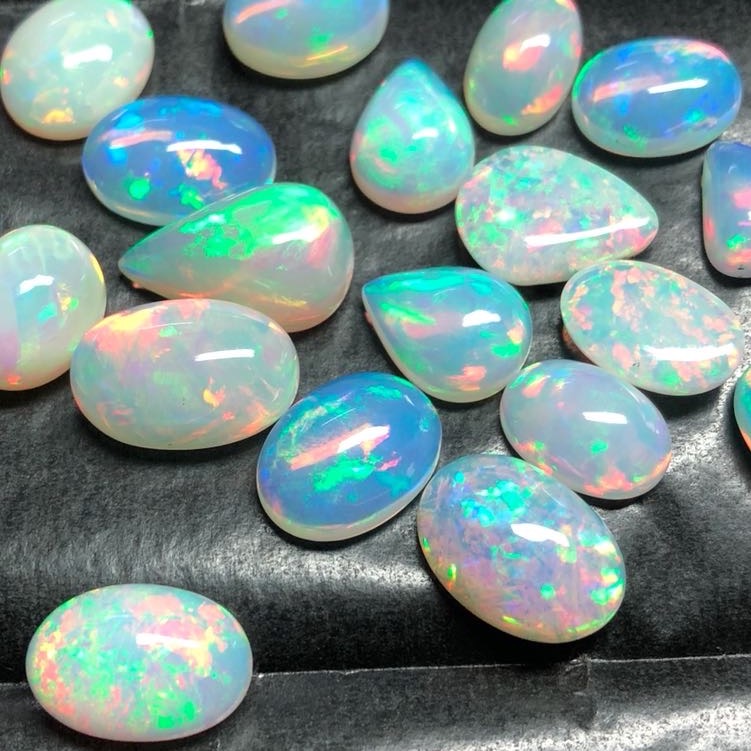


Ethiopian Welo opal is frequently found in the warm yellows and oranges of fire opal, in milky whites, and an almost clear state known as crystal opal. While sorting out the names and origins of Ethiopian opals can be a little tricky, identifying their unique colors and patterns can be far more fun. The term Welo is easily tied to the Wollo Province, though the area’s gems may also be associated with names like Delanta (a sub-region of Wollo) and Wegel Tena (a nearby village).

Like gemstones from Shewa Province, Welo opals may also take on geographical names that predate the country’s new constitution (and subsequent name changes) in the mid 1990s. The gems found here are known by several spellings at international markets - most commonly Welo, Wollo, and Wolo. These impressive, approachably priced opals have created worldwide buzz and inspired a new generation of fans of the October birthstone.Įthiopia’s most important opal deposits are found in a region called Tsehay Mewcha, a rocky, volcanic plateau at the headwaters of the Blue Nile. Taking their name from the one time Wollo Province, Welo opals soon became a powerhouse to rival Australia in terms of quality and production.įive years later, another find to the north further bolstered the importance of Ethiopia as an opal source. Sometimes known as Menz Gishe, Shewa, or Mezezo opals, these delicate beauties are mined about 150 miles (240 km) northeast of Ethiopia’s capital city, Addis Ababa.Ĭalled a “promising new deposit” by the GIA magazine Gems & Geology, a 2008 discovery near the village of Wegel Tena almost immediately reshaped the global opal trade. In a phenomenon called contra luz, many transparent opals from the Shewa area reveal their prismatic play of color when lit from behind instead of above. Yita Ridge, a mining area in the now defunct province, produced gems ranging from transparent pale yellows to rich chocolatey browns. The first big wave of Ethiopian opal to hit gem markets began in the 1990s, sourced from what was then called Shewa Province. Regional boundaries have been shaken up by governmental restructuring over the years, and many stones still bear the original names of towns and provinces where they are found. There are several significant mining districts in Ethiopia, each with their own distinctive colors and types of stone. Leaky uncovered in the Kenyan cave most likely made its way from neighboring Ethiopia. While very few sources of African opal were known at the time of his research, modern scholars suggest that the material Dr. A 1939 discovery by archeologist Louis Leakey places opals in the hands of humans in Kenya nearly 6000 years before contemporary Ethiopian opal discoveries. While the Ethiopian opal boom seems relatively new, archeology shows that opals may have played a part in East African trade as early as 4000 B.C. From these humble beginnings, come some of our era’s most significant and actively traded opal gemstones. They often work as a co-op with their fellow opal hunters to share in the work and the success of a great find. Each day, miners traverse the precarious cliff faces on foot to reach the dig sites, and do most of their exploring with traditional hand tools. Located on hard to access, high elevation plateaus that can reach 10,000 ft (+3000 m), Ethiopain opal mines are worked today much as they might have been historically. First discovered, or shall we say rediscovered, in the 1990s, opal is found in the steep volcanic cliffs that border the Great Rift Valley. Ethipian opal is both very new to modern opal jewelry markets, and potentially, the first source of the flashy gem known to the ancient world.


 0 kommentar(er)
0 kommentar(er)
